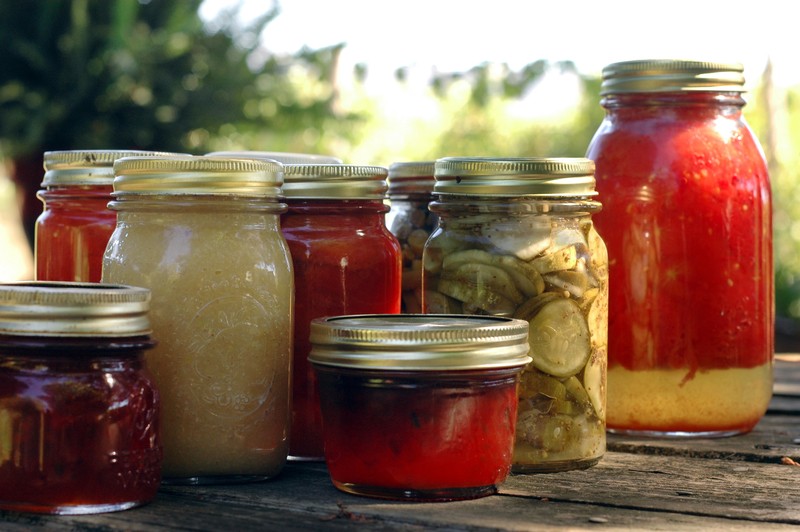Solar ovens are an inexpensive way to cook and preserve food; they take a lot of time, but require almost no monitoring or maintenance.
Using them as part of your cooking arsenal when storing foods is a great way to ensure you have food for when you need it, with very little effort from the cooking perspective.
Canning High-Acid Foods in a Solar Oven
Now that we’ve established that you can’t pressure can, that narrows down the list of foods that you can preserve in your solar oven. High-acid foods such as most fruits and tomatoes are safe to can in your solar oven, but you can’t can most vegetables or any meats.
To use your solar oven to can, it’s important that you start in the morning on a clear day so that you have plenty of time to get it warmed up and give your cans plenty of time to process.
Start by sterilizing your jars and equipment so that you reduce the risk of contaminating your canned goods with bacteria. Prepare your fruit just as you would for regular canning.
Just as you do when canning in a water bath, fill your jars with fruit, sugar (if you want) and water or juice. Slide your spatula down the sides to get as much air as possible out. Leave the head room at the top of the jar as recommended by the instructions for your particular fruit. You may want to leave a quarter of an inch or so more than recommended.
Place your jars in your solar oven and close the lid. Once the proper temperature has been reached, the fruits will begin to boil in the jars. Process according to the recommended time for what you’re canning, starting at the time that it boils.
Remove your jars carefully as they will be hot. Not only are you in danger of burning yourself, but the jars are also more fragile because they’re hot and pressurized. Set them somewhere where there won’t be a draft, cover them with a towel, and let them cool naturally.
To test if they sealed after the jars are cool, gently press down on the center of the seal. If it pops back up, your jars didn’t seal.
Dehydrating Food in a Solar Oven
A solar oven is excellent for dehydrating food – the only trick is to keep the temperature low enough that you don’t cook it instead of dehydrating it. Prepare your meat, fruits, or vegetables just as you would for the dehydrator and place them on a sheet or, even better, on a drying wrack.
Put the pan or drying rack in the solar oven and leave it in there at a low temp of no more than 150 degrees until it reaches the crisp phase. Remember that your meat or produce needs to be sliced thinly before dehydrating. Flip your product from side to side every couple of hours so that it dehydrates evenly. Turn your dehydrator accordingly, too.
Fruit Leather
Your solar oven would be a good way to make fruit leather, too. Prepare your fruit by creating a smooth paste. Add sugar to the mix if you’d like, but if you’re using super-ripe fruit, which is the best type to use for fruit leather, you probably won’t need any.
Again, you don’t want to cook the fruit; you want to dehydrate it, so you don’t want to let your solar cooker get too hot. Spread parchment paper on a cookie sheet, or whatever type of pan will fit in your cooker, then spread the fruit puree in a thin layer on the paper. Dry as long as needed to make it like leather.
The key to using a solar oven is to make sure your inner cavity reaches an adequate temperature to kill all the critters you need to kill to make the food healthy.
That said, a solar oven is an inexpensive and easy, even though it's a time-consuming way of preserving and cooking foods for winter months or for use in a survival situation.
To learn more about solar cooking, please visit Survivorpedia.

This article is misleading at best and lying at worst.
It is NOT safe to can food using a solar oven.